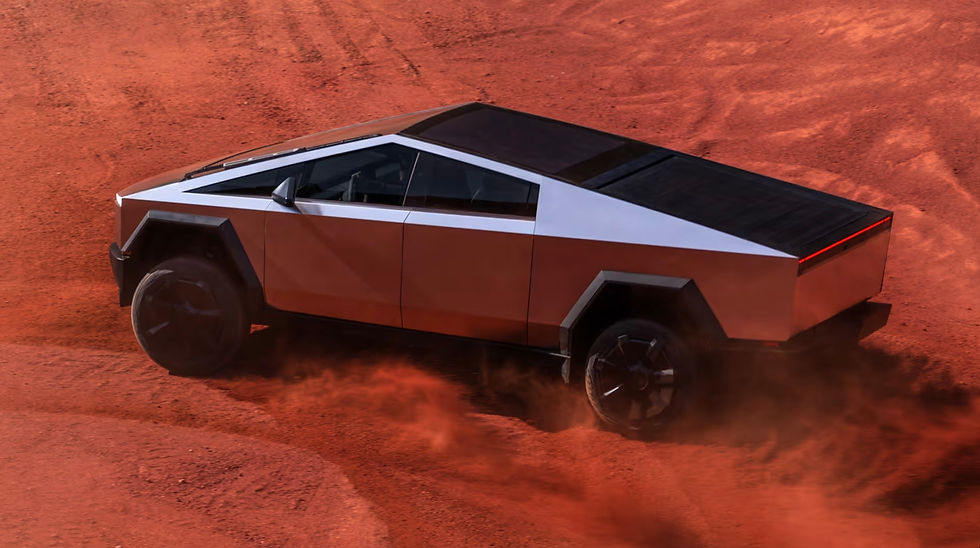Why the Tesla Cybertruck Won't Be Sold in Australia
- Jack Perkin
- Apr 22, 2024
- 2 min read
When Elon Musk unveiled the Tesla Cybertruck, it sparked waves of excitement and debate worldwide. Its futuristic design, impressive performance, and eco-friendly electric powertrain captured the imagination of many. However, despite its global appeal, there are several reasons why the Cybertruck won't be hitting the roads down under in Australia.

1. Regulatory Challenges
Australia has stringent safety and design standards for vehicles, and the Cybertruck's unique design poses a challenge in meeting these requirements. The country's regulations mandate that vehicles must adhere to certain safety standards, including crash testing and pedestrian safety measures. The Cybertruck's unconventional exterior, particularly its sharp edges and angular design, could pose safety concerns in the event of a collision. Additionally, Australian road regulations require vehicles to have certain features like side mirrors, which the Cybertruck lacks due to its camera-based system. Adapting the Cybertruck to comply with these regulations would require significant modifications, potentially altering its iconic design and driving up production costs.
2. Infrastructure Limitations
While Australia has been making strides in electric vehicle infrastructure, including charging stations, the widespread adoption of electric vehicles like the Cybertruck faces challenges. Australia's vast landmass and relatively low population density outside major cities mean that building an extensive charging network across the country is a complex and expensive endeavor. The Cybertruck's large size and long-range capabilities demand fast-charging stations capable of handling high power outputs, which are still limited in many parts of Australia. Without a robust charging infrastructure, potential Cybertruck owners may be deterred by concerns over range anxiety and the practicality of long-distance travel.
3. Market Demand and Competition
Australia's automotive market has unique preferences and demands, heavily influenced by factors such as terrain, climate, and lifestyle. While the Cybertruck's performance and capabilities may appeal to some Australians, the market for large, rugged pickup trucks is comparatively smaller compared to countries like the United States. Australians have historically favored smaller vehicles, SUVs, and utes (utility vehicles), with a preference for diesel-powered models for their towing capabilities. The Cybertruck's electric powertrain and imposing size may not align with the typical preferences of Australian consumers. Moreover, the country already has a competitive market for utes dominated by established brands like Toyota, Ford, and Mitsubishi, making it challenging for a newcomer like Tesla to gain a foothold.
In conclusion, while the Tesla Cybertruck has generated significant buzz worldwide, its journey to Australian roads faces several obstacles. From regulatory hurdles to infrastructure limitations and market dynamics, the challenges are substantial. While it's always possible for Tesla to adapt and overcome these challenges in the future, for now, it seems the Cybertruck won't be gracing Australian highways anytime soon.
.png)



Comments